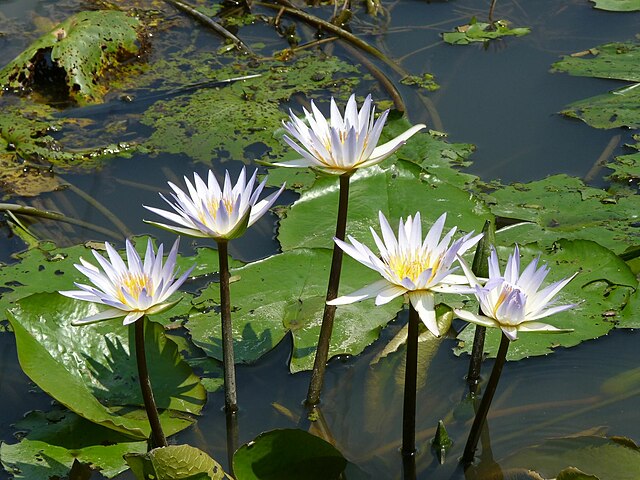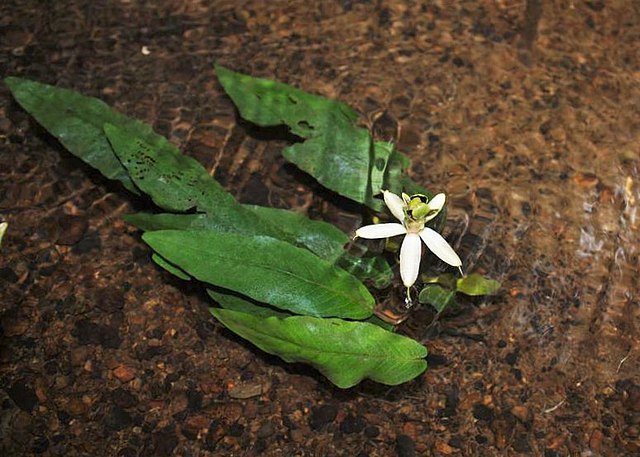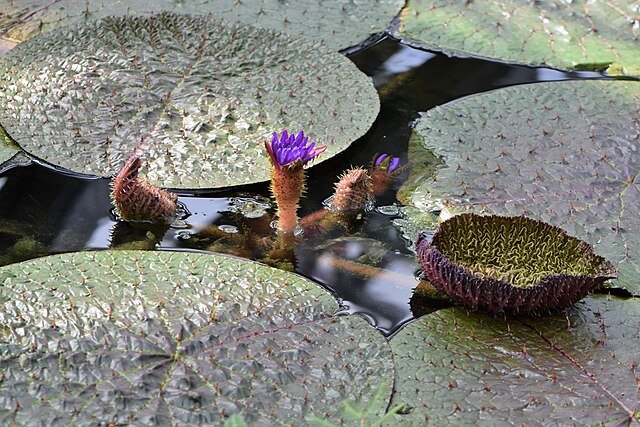Nymphaeaceae is a family of flowering plants, commonly called water lilies. They live as rhizomatous aquatic herbs in temperate and tropical climates around the world. The family contains five genera with about 70 known species. Water lilies are rooted in soil in bodies of water, with leaves and flowers floating on or emergent from the surface. Leaves are round, with a radial notch in Nymphaea and Nuphar, but fully circular in Victoria and Euryale.
Nymphaeaceae
Flowering Barclaya longifolia specimen, Thailand
Flower of Victoria cruziana, Santa Cruz water lily
Flowering Euryale ferox specimen cultivated in the Botanischer Garten Berlin-Dahlem, Germany
Flowering plants are plants that bear flowers and fruits, and form the clade Angiospermae, commonly called angiosperms. They include all forbs, grasses and grass-like plants, a vast majority of broad-leaved trees, shrubs and vines, and most aquatic plants. The term "angiosperm" is derived from the Greek words ἀγγεῖον / angeion and σπέρμα / sperma ('seed'), meaning that the seeds are enclosed within a fruit. They are by far the most diverse group of land plants with 64 orders, 416 families, approximately 13,000 known genera and 300,000 known species. Angiosperms were formerly called Magnoliophyta.
Image: Ranunculus repens 1 (cropped)
Image: Nymphaea alba flower and leaves DSC 3326w
Image: Meadow Foxtail head
Image: Apple blossom. Eastern Siberia








